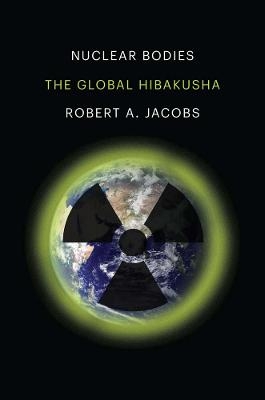
Nuclear Bodies
The Global Hibakusha
Seiten
2022
Yale University Press (Verlag)
978-0-300-23033-8 (ISBN)
Yale University Press (Verlag)
978-0-300-23033-8 (ISBN)
The Cold War reconsidered as seventy-five years of slow nuclear warfare
The Cold War reconsidered as a limited nuclear war
“[A] grimly important analysis of the cold war.”—Andrew Robinson, Nature
“Inexorable clarity and care for his fellow humans mark Robert Jacobs’s guide to the Cold War as a limited nuclear war, whose harms disfigure any possible future.”—Norma Field, author of In the Realm of a Dying Emperor: Japan at Century’s End
In the fall of 1961, President Kennedy somberly warned Americans about deadly radioactive fallout clouds extending hundreds of miles from H-bomb detonations, yet he approved ninety-six U.S. nuclear weapon tests for 1962. Cold War nuclear testing, production, and disasters like Chernobyl and Fukushima have exposed millions to dangerous radioactive particles; these millions are the global hibakusha. Many communities continue to be plagued with dire legacies and ongoing risks: sickness and early mortality, forced displacement, uncertainty and anxiety, dislocation from ancestors and traditional lifestyles, and contamination of food sources and ecosystems.
Robert A. Jacobs re-envisions the history of the Cold War as a slow nuclear war, fought on remote battlegrounds against populations powerless to prevent the contamination of their lands and bodies. His comprehensive account necessitates a profound rethinking of the meaning, costs, and legacies of our embrace of nuclear weapons and technologies.
The Cold War reconsidered as a limited nuclear war
“[A] grimly important analysis of the cold war.”—Andrew Robinson, Nature
“Inexorable clarity and care for his fellow humans mark Robert Jacobs’s guide to the Cold War as a limited nuclear war, whose harms disfigure any possible future.”—Norma Field, author of In the Realm of a Dying Emperor: Japan at Century’s End
In the fall of 1961, President Kennedy somberly warned Americans about deadly radioactive fallout clouds extending hundreds of miles from H-bomb detonations, yet he approved ninety-six U.S. nuclear weapon tests for 1962. Cold War nuclear testing, production, and disasters like Chernobyl and Fukushima have exposed millions to dangerous radioactive particles; these millions are the global hibakusha. Many communities continue to be plagued with dire legacies and ongoing risks: sickness and early mortality, forced displacement, uncertainty and anxiety, dislocation from ancestors and traditional lifestyles, and contamination of food sources and ecosystems.
Robert A. Jacobs re-envisions the history of the Cold War as a slow nuclear war, fought on remote battlegrounds against populations powerless to prevent the contamination of their lands and bodies. His comprehensive account necessitates a profound rethinking of the meaning, costs, and legacies of our embrace of nuclear weapons and technologies.
Robert A. Jacobs is a professor at the Hiroshima Peace Institute of Hiroshima City University. He is the co-founder of the Global Hibakusha Project, conducting field research on radiation-affected communities in more than twenty countries.
| Erscheinungsdatum | 22.03.2022 |
|---|---|
| Zusatzinfo | 24 b-w illus. |
| Sprache | englisch |
| Maße | 156 x 235 mm |
| Themenwelt | Geschichte ► Allgemeine Geschichte ► Neuzeit (bis 1918) |
| Naturwissenschaften ► Chemie ► Physikalische Chemie | |
| Naturwissenschaften ► Physik / Astronomie ► Atom- / Kern- / Molekularphysik | |
| Sozialwissenschaften ► Soziologie | |
| ISBN-10 | 0-300-23033-8 / 0300230338 |
| ISBN-13 | 978-0-300-23033-8 / 9780300230338 |
| Zustand | Neuware |
| Haben Sie eine Frage zum Produkt? |
Mehr entdecken
aus dem Bereich
aus dem Bereich
Europa 1848/49 und der Kampf für eine neue Welt
Buch | Hardcover (2023)
DVA (Verlag)
CHF 67,20
Giordano Bruno - ein ketzerisches Leben
Buch | Hardcover (2024)
C.H.Beck (Verlag)
CHF 41,85


